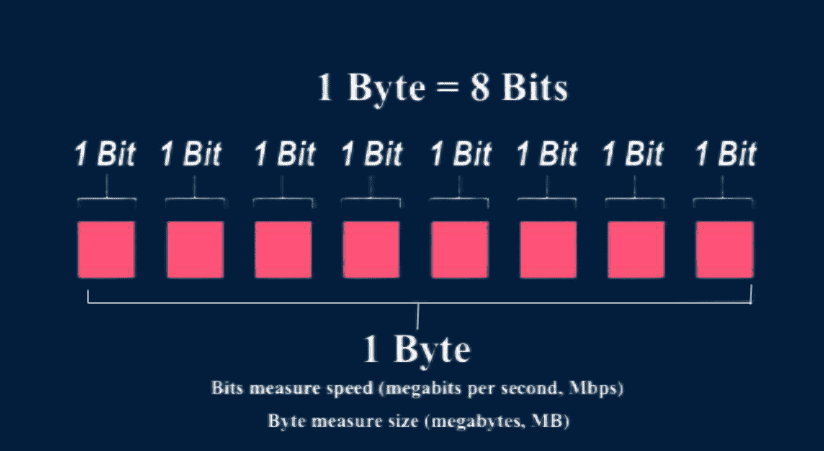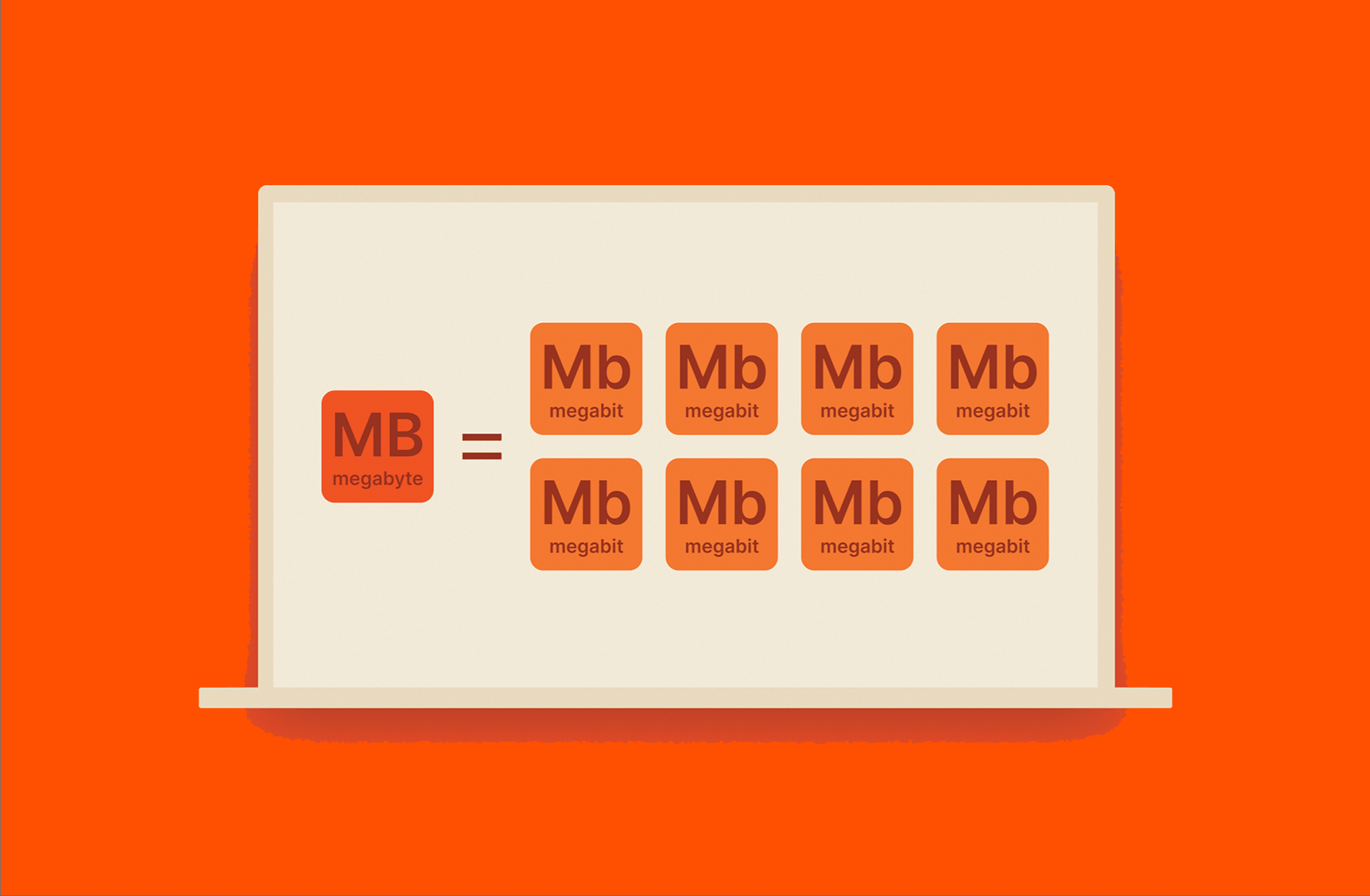A Comprehensive Overview to Measuring Megabits Per Second for Home Use
A Comprehensive Overview to Measuring Megabits Per Second for Home Use
Blog Article
Exactly How Megabits Per Second Influence Your Online Activities
The principle of megabits per second (Mbps) plays a critical role in forming our online experiences. Greater Mbps can boost performance and reduce disruptions, while inadequate speeds might cultivate frustration and inadequacy.
Recognizing Megabits Per Second
When taking into consideration internet rate, it's necessary to recognize the principle of megabits per second (Mbps), which works as a typical dimension for information transfer rates. This statistics evaluates just how much information can be transferred over an internet link in one second, giving a clear understanding of efficiency abilities - Megabits Per Second. For context, one megabit is equal to one million bits, and Mbps is frequently used to express transmission capacity for different on-line activities
A higher Mbps suggests a much faster internet connection, enabling individuals to perform jobs such as downloading and install data, searching internet sites, and participating in online video gaming much more effectively. Normal browsing needs around 1-5 Mbps, while streaming high-def video clip might require 5-25 Mbps. Recognizing these demands is crucial for establishing the suitable net speed needed for certain tasks.
In addition, the variety of devices connected to a network can influence general efficiency. Several customers streaming, pc gaming, or downloading concurrently can strain readily available bandwidth, leading to slower rates - Megabits Per Second. Reviewing individual online practices and demands is vital in choosing a net plan that lines up with one's requirements, ensuring a smooth digital experience
Streaming and Buffering Issues
Streaming high-definition material has actually ended up being a staple of contemporary on-line enjoyment, yet it is usually gone along with by annoying buffering issues. These disruptions can significantly interfere with the checking out experience, bring about dissatisfaction and prospective loss of target market interaction. Buffering happens when the information sent from the streaming solution is not gotten rapidly sufficient to maintain a smooth playback, usually because of not enough web speed gauged in megabits per second (Mbps)

Additionally, real-time streaming can be affected by network blockage, which happens when several gadgets share the very same transmission capacity. Enhancing link speed and making certain adequate Mbps is important for a seamless streaming experience. As streaming services continue to develop, comprehending the impact of Mbps on buffering problems continues to be critical for consumers seeking uninterrupted entertainment.
Online Gaming Efficiency
The effect of internet rate on online tasks prolongs beyond streaming, dramatically influencing online gaming performance. In competitive pc gaming, low latency and high data transfer are essential for a seamless experience. A quick link lessens lag, enabling gamers to react promptly to in-game events, which can be the difference between victory and defeat.
Transmission capacity, measured in megabits per second (Mbps), plays a vital role in sustaining multiple gadgets and gaming systems concurrently. Not enough data transfer can bring about went down connections or decreased video game high quality, negatively influencing gameplay. For circumstances, on the internet multiplayer games call for substantial information transfer, especially throughout peak video gaming hours when various gamers are online.
Fast-paced first-person shooters demand higher speeds to preserve responsiveness, while my blog turn-based strategy video games might function fairly well on lower speeds. As on the internet pc gaming continues to advance, with increasing visual fidelity and even more complex multiplayer environments, the need for higher Mbps will only intensify.
Video Clip Conferencing Top Quality
In site link today's electronic landscape, video conferencing top quality is greatly affected by net rate, specifically in terms of bandwidth and latency. High-grade video calls need sufficient data transfer to transfer audio and video data flawlessly. Typically, a minimum of 1.5 Mbps upload and download rates is recommended for typical meaning video, while high-def video clip conferencing typically demands at the very least 3 Mbps.
Latency, or the delay between sending and getting information, also plays a crucial role in the customer experience. Low latency makes certain that discussions flow naturally without uncomfortable pauses or interruptions. Ideally, latency needs to be below 150 nanoseconds for reliable communication. Greater latency can bring about echo, lag, and disjointed communications, which can prevent collaboration and involvement during conferences.
In addition, numerous participants in a video clip seminar can strain available bandwidth, requiring also higher rates. Network congestion, commonly triggered by simultaneous tasks like streaming or downloading, can additionally break down video high quality. Hence, for companies relying upon video clip conferencing for remote collaboration, comprehending the partnership in between megabits per second and overall communication high quality is necessary for keeping efficiency and boosting virtual interactions.
Selecting the Right Net Plan
Choosing an appropriate net strategy is vital for making certain optimum efficiency in various online activities, specifically in settings that require high data transfer, such as video clip conferencing and online pc gaming. Megabits Per Second. When thinking about a web strategy, it is important to evaluate both the rate and data allocation to match your certain usage needs
For families with several individuals participating in synchronised activities, a strategy using higher megabits per second (Mbps) is recommended. you could try these out Commonly, a minimum of 25 Mbps appropriates for conventional streaming and surfing, while plans surpassing 100 Mbps are preferable for even more intensive jobs. Furthermore, take into consideration the nature of your online tasks; video conferencing needs a minimum of 1.5 Mbps submit rate, while on-line gaming might need a reduced latency yet consistent connection.
It is also crucial to assess your information cap. Unrestricted information plans can prevent strangling and disturbances, especially if hefty use is anticipated. Finally, research company in your area, as schedule and pricing can differ. By thoughtfully choosing a web strategy customized to your requirements, you can enhance your on-line experience, guaranteeing smooth, undisturbed access to your preferred activities.
Verdict
In verdict, the importance of megabits per second (Mbps) fit on-line tasks can not be overstated. Higher Mbps facilitates smooth streaming, minimizes buffering, improves video gaming experiences, and guarantees top quality video clip conferencing. Conversely, poor bandwidth can lead to irritating disturbances and decreased efficiency across various jobs. An extensive understanding of individual or household Mbps needs is vital for selecting an ideal web plan that adequately supports diverse online tasks and customer needs.

Commonly, a minimum of 25 Mbps is appropriate for typical streaming and browsing, while strategies going beyond 100 Mbps are more suitable for even more intensive tasks. Furthermore, take into consideration the nature of your online tasks; video clip conferencing requires at the very least 1.5 Mbps post rate, while on-line pc gaming may need a reduced latency however regular link.
Report this page